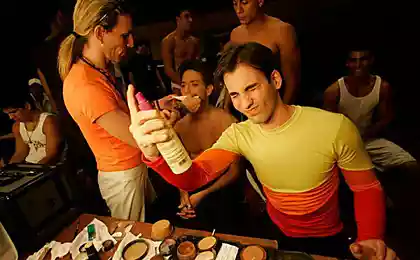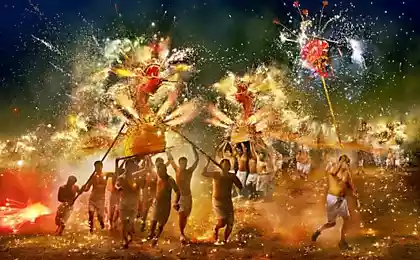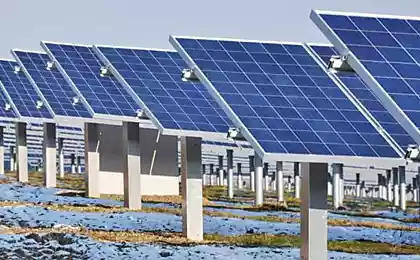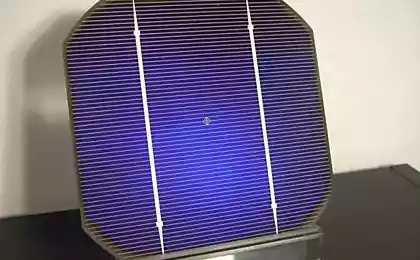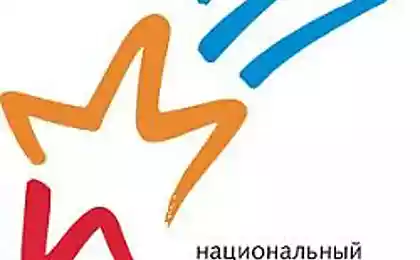1146
Competition "Solar" home
Last Thursday, in the heart of the capital of the United States opened Competition green buildings, "Solar Decathlon" (Solar Decathlon). On the most famous avenue in Washington a few days was erected a small village consisting of very dissimilar houses, which, however, were united by one common feature: the main source of energy in them are solar panels located on the roof, walls and gardens. The authors of all the projects involved in a competition organized by US Department of Energy - students and teachers of twenty universities. Homes will be evaluated on ten criteria (hence the "decathlon" in the title of the contest): architecture, marketability, engineering achievements, lighting design, advertising abilities authors projects, the level of humidity temperature in homes, providing hot water, the operation of household appliances, fitness for houses cooking, working on a computer and a home theater operation, energy production and consumption.
Such competitions are held annually in Washington since 2002. The winner of this year's competition will be announced at a ceremony on October 16.
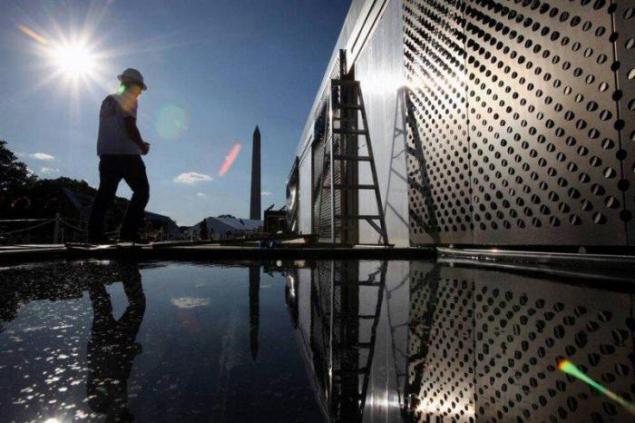
1. This "house" built by students at the University of Illinois - one of the 20 homes offered for competition «Solar Decathlon 2009" (Solar Decathlon), which is sponsored by the US Department of Energy. Like other exhibits, this house uses only solar energy. Unlike the others, he is in the "barn" style of the best mid-western traditions. The contest will be held until October 16. (Stefano Paltera / U.S. Dept. of Energy)

2. Customers lined up Friday at the "solar" home from a team of Ontario and British Columbia, which has a sealed insulating windows from floor to ceiling. "The team will have to do the usual chores such as cooking, washing and wash the dishes, to ensure energy efficiency of their homes," - said the representative of the Ministry of Energy. Plus, for the first time in the competition, the house will be connected to a single power system to other exhibitors could use the excess energy. (Stefano Paltera / U.S. Dept. of Energy)
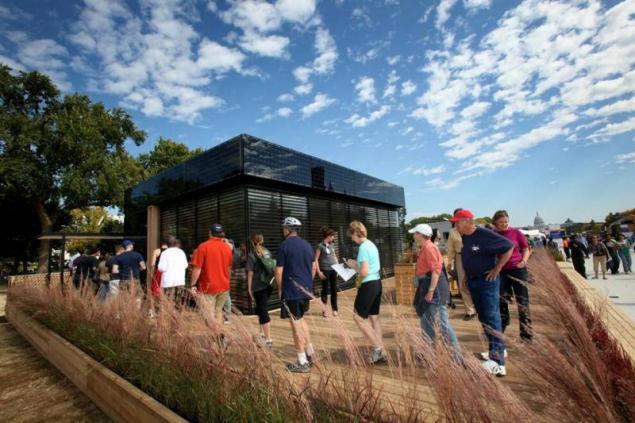
3. Visitors to the home team from Pennsylvania with a "live" wall of plants that can be used for cooking. (Stefano Paltera / U.S. Dept. of Energy)
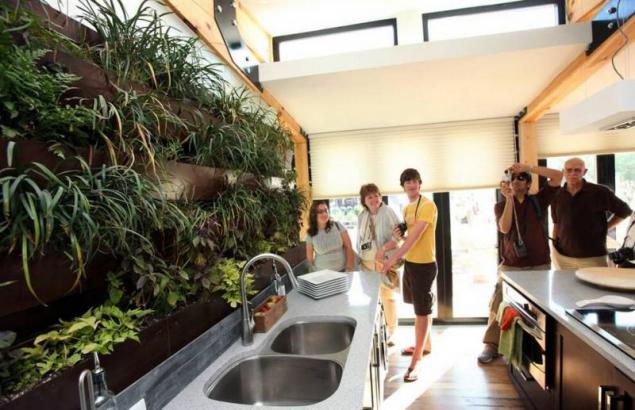
4. The team from Germany is finalizing his house to take part in the competition on Wednesday. The team collected the whole house Monday, working in two shifts, and the next day established the wiring. On Wednesday, the house was connected and can transmit excess energy total energy system. (Jim Watson / AFP - Getty Images)
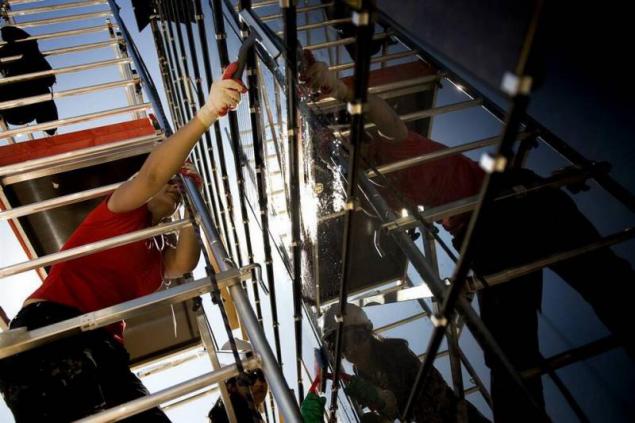
5. Zoe Galan from the University of Puerto Rico sets the temperature sensor at his home on Friday. Home team created specifically for use in the Caribbean. It uses a special screen that reflects 90% of solar energy, while at the same time letting the breeze and opening a view. (Stefano Paltera / US Dept. of Energy Solar Decat)

6. Student Technical University of Virginia Joseph Paredes work Tuesday on wastewater filtration system, which is also a part of the interior of the house team. (Stefano Paltera / U.S. Dept. of Energy)

7. US Secretary of Energy Steven Chu visits the home of a California team. Each team received from the Department of Energy's $ 100 000 for the development of the house that they built two years, then to transport it to the competition and collect. The Ministry hopes to eventually recoup their costs through research that will help reduce the cost of solar technology. (Stefano Paltera / U.S. Dept. of Energy)
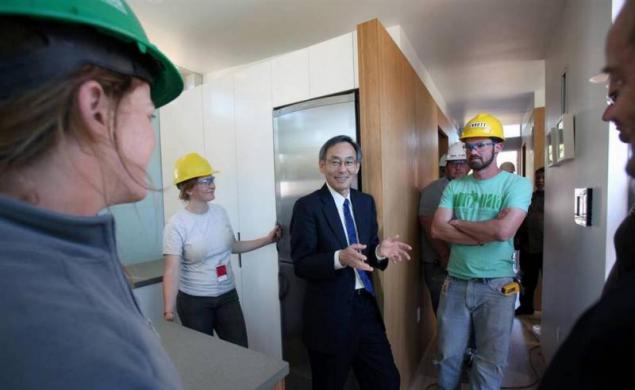
8. Iowa State University student Michael Garcia uses haystacks to decorate the house of his team. (Stefano Paltera / U.S. Dept. of Energy)
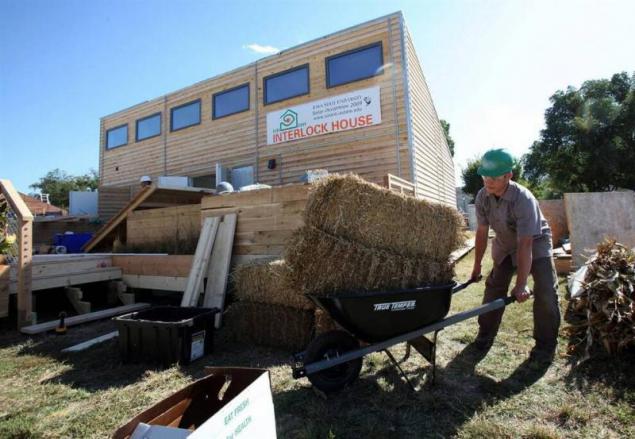
9. Just a few days about 800 students from 20 universities in four countries (USA, Canada, Germany and Spain) have built this village that runs on solar energy. October 7 team is going to their homes, and from 8 to 16 October they will participate in 10 competitions. House open to the public from 9 to 13 October and from 15 to 18 October. (Annie Coghill / U.S. Dept. of Energy)

10. House team from Germany is a two-storey cube. Exterior walls and the roof is covered with solar panels of thin film and a photocell. A team from the Technical University of Darmstadt hopes to produce energy twice as much than is required to work at home. (Jim Watson / AFP-Getty Images)

11. A team of California provided by the association Santa Clara University and the California College of Arts collects his creation on October 7. Curved design takes advantage of the windows facing south, because of which the house seem larger. (Win McNamee / Getty Images)

12. House of the University of Louisiana, called «BeauSoleil» (fr. Beautiful sun), includes a translucent canopy, which partially hides in the shadows of the south side, creating a thermal solar energy system that heats the water used in the home. The outer skin allows air to circulate between the siding and the wall to minimize heat gain. The walls are made of 16-inch insulation panels, which help to strengthen the building. (Jim Watson / AFP-Getty Images)
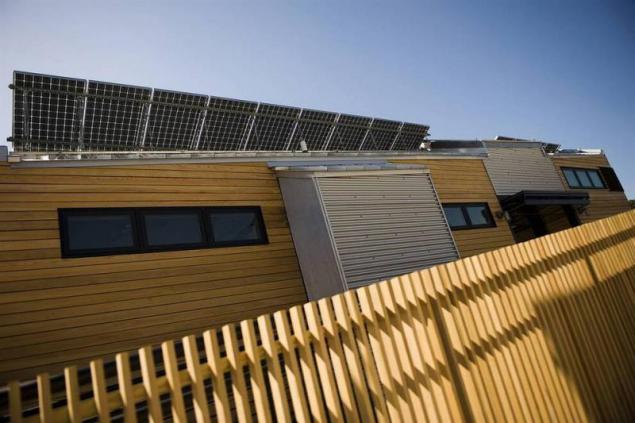
13. University of Minnesota team is working on his house. Its design includes insulated glass on the south side, which brings home the sun's heat. Displaced roof of the house and the south wall are used as storage of solar energy for electricity and hot water. If passive heat from sunlight insufficiently house uses hot water circulation system under the floor to produce radiant heat. (Win McNamee / Getty Images)

14. House team from Cornell University uses a "silo" structure: kitchen, bedroom and living room are 4, 8 meters each, and each about 12 square meters of living space. Modules are connected on the south side, leaving the northern side open. The outer layer is coated with low-alloy high-strength steel, which is oxidized to reddish skin. (Jim Watson / AFP-Getty Images)
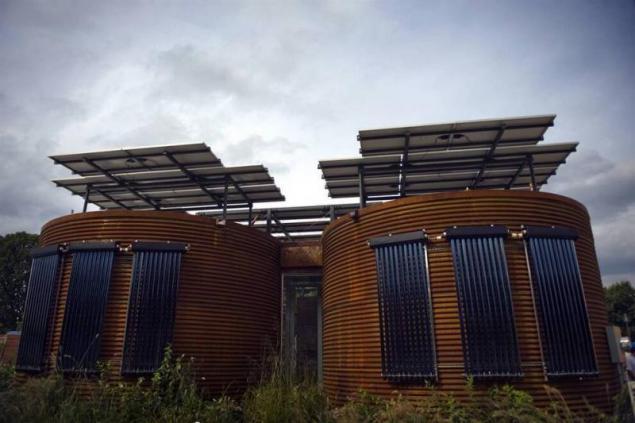
15. House of the Technical University of Virginia includes metal solar panel, under which there are glass walls and a system of bio-filter that cleans waste water from the bath and washing machine with the help of plants. (Stefano Paltera / U.S. Dept. of Energy)

16. A student at Iowa State University John Yangtum sets tubes on the roof of his team. Tube heat water using solar energy. US Energy Secretary Steven Chu said that he was looking forward to this competition. "Houses and other buildings consume 40% of the energy used in the United States - more than is used in transport, - he said. - Such competitions can be a source of new ideas and inspire the younger generation to solve the problems. " (Michael Reynolds / EPA)
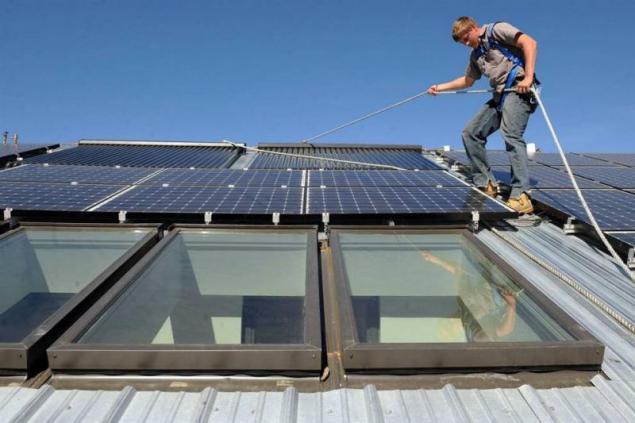
Such competitions are held annually in Washington since 2002. The winner of this year's competition will be announced at a ceremony on October 16.

1. This "house" built by students at the University of Illinois - one of the 20 homes offered for competition «Solar Decathlon 2009" (Solar Decathlon), which is sponsored by the US Department of Energy. Like other exhibits, this house uses only solar energy. Unlike the others, he is in the "barn" style of the best mid-western traditions. The contest will be held until October 16. (Stefano Paltera / U.S. Dept. of Energy)

2. Customers lined up Friday at the "solar" home from a team of Ontario and British Columbia, which has a sealed insulating windows from floor to ceiling. "The team will have to do the usual chores such as cooking, washing and wash the dishes, to ensure energy efficiency of their homes," - said the representative of the Ministry of Energy. Plus, for the first time in the competition, the house will be connected to a single power system to other exhibitors could use the excess energy. (Stefano Paltera / U.S. Dept. of Energy)

3. Visitors to the home team from Pennsylvania with a "live" wall of plants that can be used for cooking. (Stefano Paltera / U.S. Dept. of Energy)

4. The team from Germany is finalizing his house to take part in the competition on Wednesday. The team collected the whole house Monday, working in two shifts, and the next day established the wiring. On Wednesday, the house was connected and can transmit excess energy total energy system. (Jim Watson / AFP - Getty Images)

5. Zoe Galan from the University of Puerto Rico sets the temperature sensor at his home on Friday. Home team created specifically for use in the Caribbean. It uses a special screen that reflects 90% of solar energy, while at the same time letting the breeze and opening a view. (Stefano Paltera / US Dept. of Energy Solar Decat)

6. Student Technical University of Virginia Joseph Paredes work Tuesday on wastewater filtration system, which is also a part of the interior of the house team. (Stefano Paltera / U.S. Dept. of Energy)

7. US Secretary of Energy Steven Chu visits the home of a California team. Each team received from the Department of Energy's $ 100 000 for the development of the house that they built two years, then to transport it to the competition and collect. The Ministry hopes to eventually recoup their costs through research that will help reduce the cost of solar technology. (Stefano Paltera / U.S. Dept. of Energy)

8. Iowa State University student Michael Garcia uses haystacks to decorate the house of his team. (Stefano Paltera / U.S. Dept. of Energy)

9. Just a few days about 800 students from 20 universities in four countries (USA, Canada, Germany and Spain) have built this village that runs on solar energy. October 7 team is going to their homes, and from 8 to 16 October they will participate in 10 competitions. House open to the public from 9 to 13 October and from 15 to 18 October. (Annie Coghill / U.S. Dept. of Energy)

10. House team from Germany is a two-storey cube. Exterior walls and the roof is covered with solar panels of thin film and a photocell. A team from the Technical University of Darmstadt hopes to produce energy twice as much than is required to work at home. (Jim Watson / AFP-Getty Images)

11. A team of California provided by the association Santa Clara University and the California College of Arts collects his creation on October 7. Curved design takes advantage of the windows facing south, because of which the house seem larger. (Win McNamee / Getty Images)

12. House of the University of Louisiana, called «BeauSoleil» (fr. Beautiful sun), includes a translucent canopy, which partially hides in the shadows of the south side, creating a thermal solar energy system that heats the water used in the home. The outer skin allows air to circulate between the siding and the wall to minimize heat gain. The walls are made of 16-inch insulation panels, which help to strengthen the building. (Jim Watson / AFP-Getty Images)

13. University of Minnesota team is working on his house. Its design includes insulated glass on the south side, which brings home the sun's heat. Displaced roof of the house and the south wall are used as storage of solar energy for electricity and hot water. If passive heat from sunlight insufficiently house uses hot water circulation system under the floor to produce radiant heat. (Win McNamee / Getty Images)

14. House team from Cornell University uses a "silo" structure: kitchen, bedroom and living room are 4, 8 meters each, and each about 12 square meters of living space. Modules are connected on the south side, leaving the northern side open. The outer layer is coated with low-alloy high-strength steel, which is oxidized to reddish skin. (Jim Watson / AFP-Getty Images)

15. House of the Technical University of Virginia includes metal solar panel, under which there are glass walls and a system of bio-filter that cleans waste water from the bath and washing machine with the help of plants. (Stefano Paltera / U.S. Dept. of Energy)

16. A student at Iowa State University John Yangtum sets tubes on the roof of his team. Tube heat water using solar energy. US Energy Secretary Steven Chu said that he was looking forward to this competition. "Houses and other buildings consume 40% of the energy used in the United States - more than is used in transport, - he said. - Such competitions can be a source of new ideas and inspire the younger generation to solve the problems. " (Michael Reynolds / EPA)

